Vittorio Sella: The Photographer on the Roof of the World
Vittorio Sella: The Photographer on the Roof of the World
Vittorio Sella: The Photographer on the Roof of the World
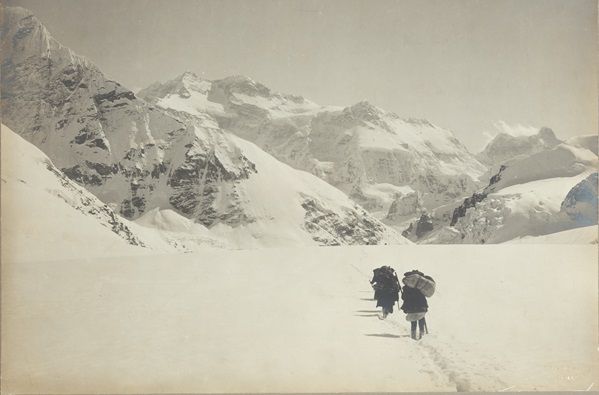
Vittorio Sella, View of Baltoro Towers (including Trango), Karakoram Range (detail), 1909, Silver gelatin print mounted on card. Collection: DAG
Vittorio Sella, born on August 28, 1859, in Biella, Italy, was a pioneering photographer and mountaineer renowned for his breath-taking images of the world's highest peaks. His unique blend of mountaineering and photography set him apart in the late nineteenth and early twentieth centuries, allowing him to capture stunning landscapes that had never been documented.
He is also held to be a pioneering influence in efforts to survey and map the Himalayan ranges, employing early versions of photogrammetry to enable an understanding of the spatial uniqueness of the mountains and its geological properties. As works that combined an aesthetics of sublime photography with land surveying, it also helped rationalise the colonial control of territories in India, especially its fragile borderlands to the north that was described by the Himalayas.
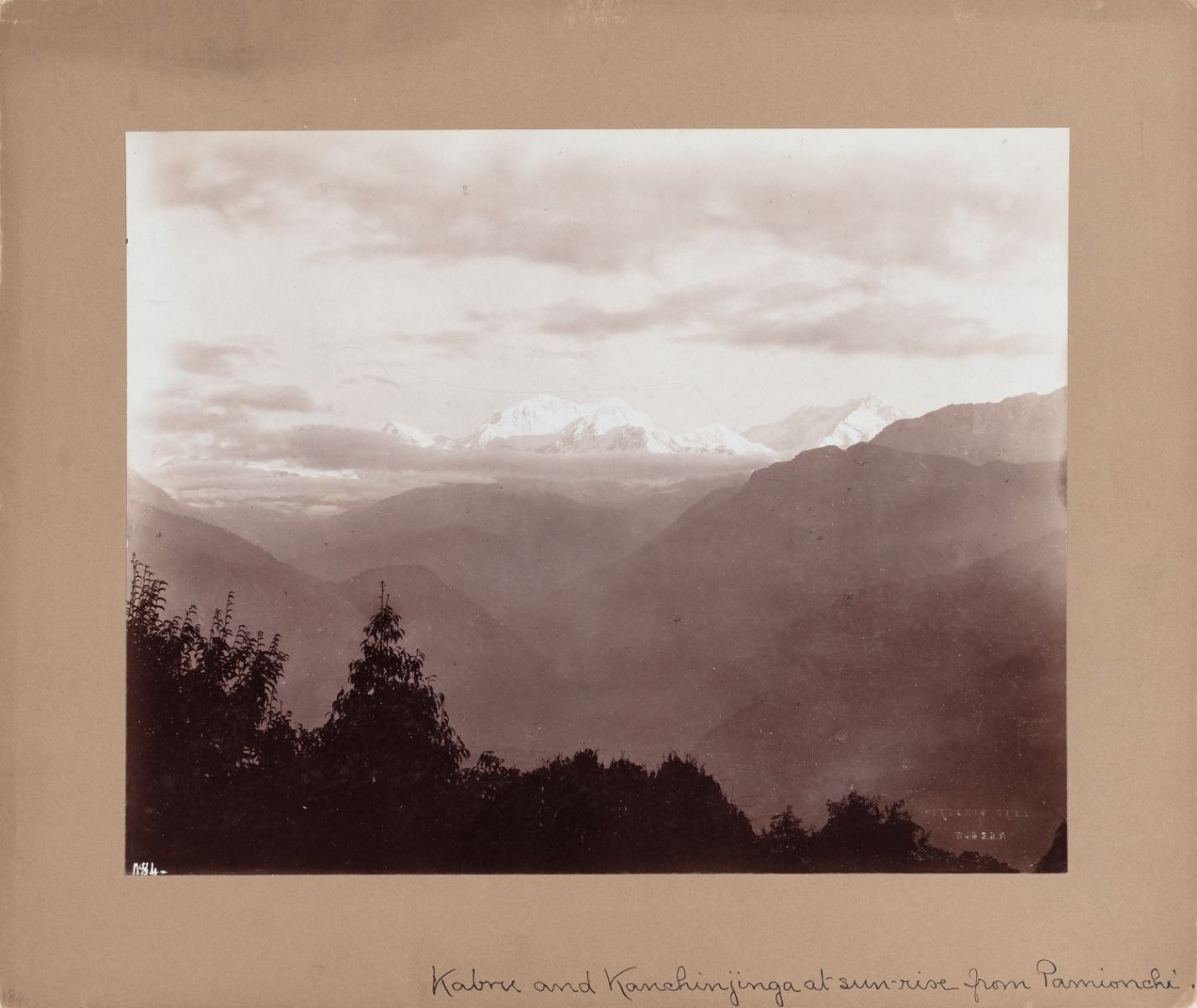
Vittorio Sella, Kabru and Kanchinjinga [Kangchenjunga] at Sunrise from Pamionchi [Sikkim], 1899, Collodion print mounted on card. Collection: DAG
Sella's passion for mountains was cultivated from an early age, influenced by his uncle Quintino Sella, a prominent statesman and one of the founders of the Italian Alpine Club. This familial connection to mountaineering inspired Sella to pursue climbing seriously. His father, a textile merchant and amateur photographer, introduced him to photography, which would become a lifelong passion. It was just before his father's death that Sella received his first camera from photographer Vittorio Besso, marking the beginning of his journey into mountain photography.

Vittorio Sella, Panoramic View of K2, Staircase Peak and Edge of Baltoro Glacier from Windy Gap [Karakoram Mountain Range, Himalayan Peaks in Cashmere], 1909, Silver gelatin print mounted on card. Collection: DAG
Sella's mountaineering career was marked by numerous significant achievements. He completed several first winter ascents in the Alps, including the Matterhorn in 1882 and Mont Blanc in 1888. His climbing exploits were complemented by his keen interest in photography; as he aimed to document high-altitude regions that had not yet been captured on film. Between 1879 and 1895, he undertook annual expeditions to the Alps, producing over a thousand images under challenging conditions. Vittorio Sella's ascent into prominence as a mountain photographer began when he caught the attention of the Duke of Abruzzi through his stunning images of the Alps. This admiration led to Sella being invited by the Duke to serve as the official photographer on several of his expeditions, including one to K2 in 1909. For their Karakoram expedition, the Duke, as a catalogue text suggests, ‘wanted to use Paganini’s photogrammetric system for the topographical work, so a photogrammetric camera with a stock of plates was added to Sella’s equipment’.
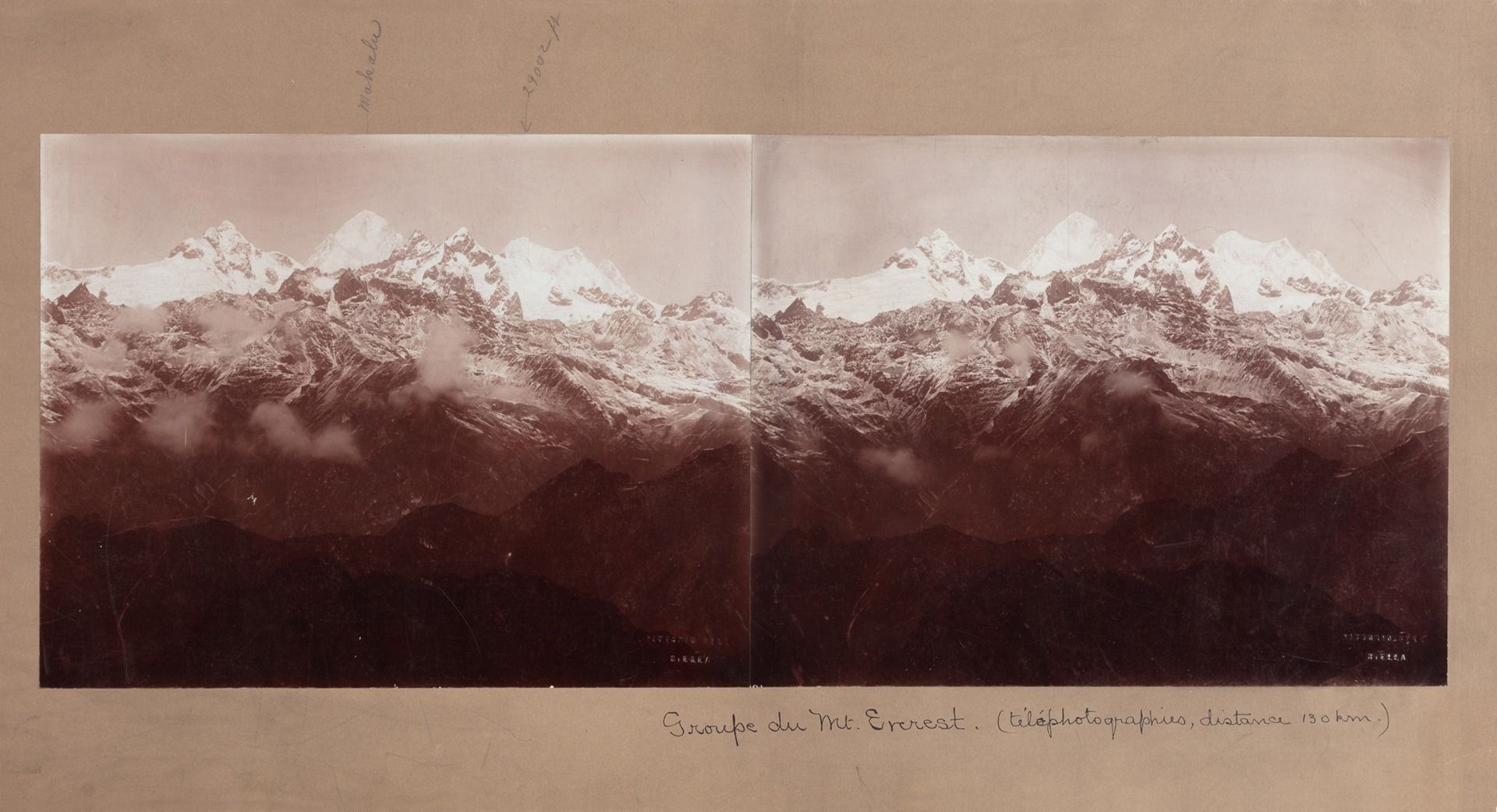
Vittorio Sella, Groupe du Mount Everest (Telephotographies, Distance 130 kilometre), 1899, Collodion print mounted on card. COllection: DAG
In 1899, Sella embarked on one of his most ambitious projects: an expedition to Kangchenjunga, the third highest mountain in the world. Accompanying British mountaineer Douglas Freshfield, Sella aimed to photograph this majestic peak while also contributing to its geographical mapping. The expedition was fraught with difficulties due to severe weather conditions that caused unseasonal snowfall in the Zemu Valley. Despite these challenges, Sella persevered and managed to capture remarkable photographs of Kangchenjunga and its surrounding landscapes.
On a particularly cold morning at around fifteen-thousand feet on the Zemu Glacier, Sella set up his large plate camera amidst three feet of snow. As dawn broke, he captured what is considered one of the finest views of Kangchenjunga's northeast face. This moment exemplified his dedication and skill as a mountain photographer; he not only braved harsh conditions but also utilised advanced photographic techniques for that era.
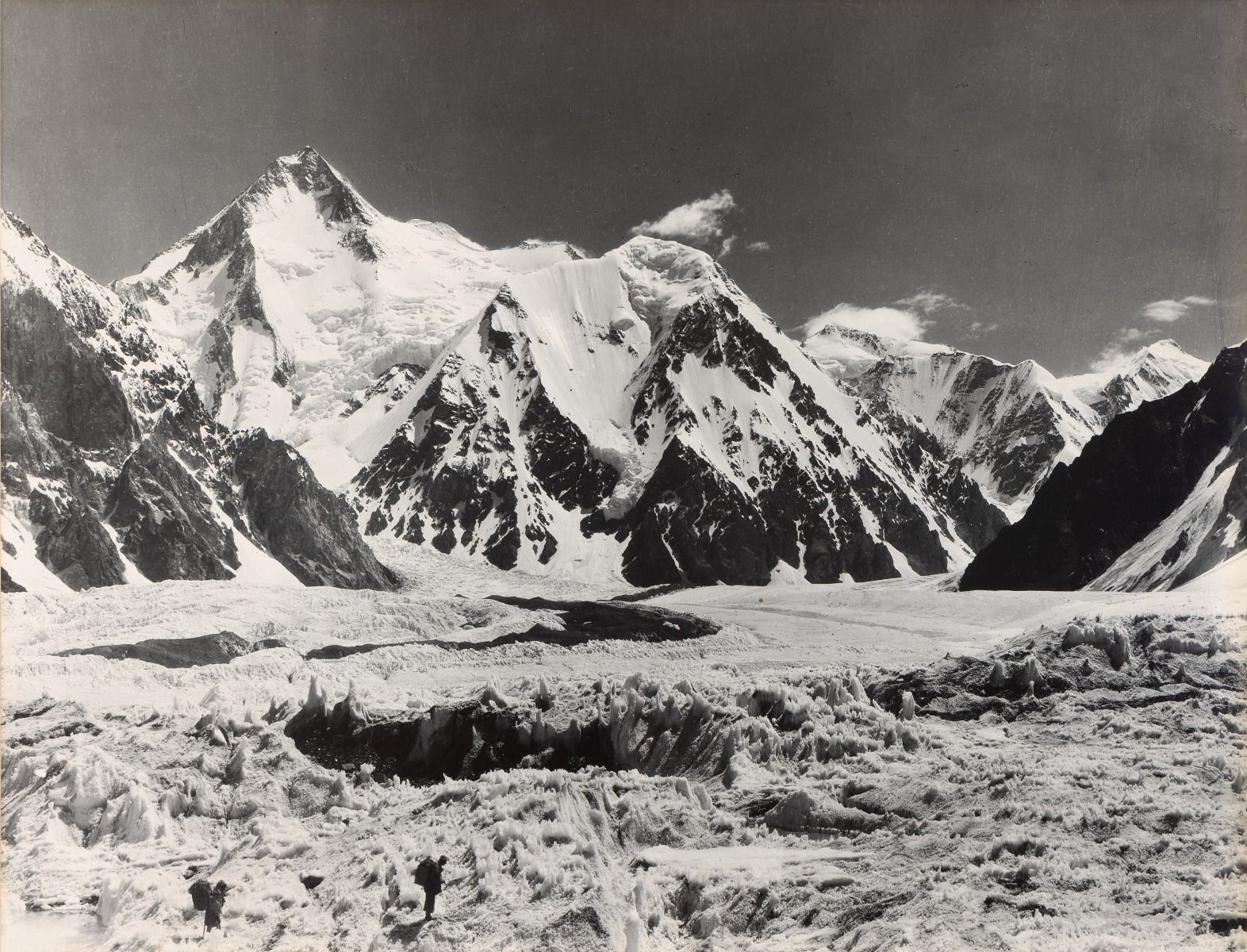
Vittorio Sella, Gasherbrum I (or Hidden Peak) [Karakoram Mountain Range], 1909, Silver gelatin print mounted on card. Collection: DAG
Sella's contributions to both photography and mountaineering are significant. His work not only documented the beauty and grandeur of remote mountains but also served as an important historical record for future explorers. He became known for capturing some of the first images of iconic peaks across four continents—including K2 and Mount Ruwenzori—establishing himself as one of the foremost mountain photographers of his time.
It was only with Second German Kangchenjunga Expedition (1931) that reliable maps of the area around Kangchenjunga began to be produced. Previous expeditions had created general maps but lacked accuracy in minor details. The expedition utilised modern stereo-photogrammetry to survey the higher features of the mountains exhaustively.
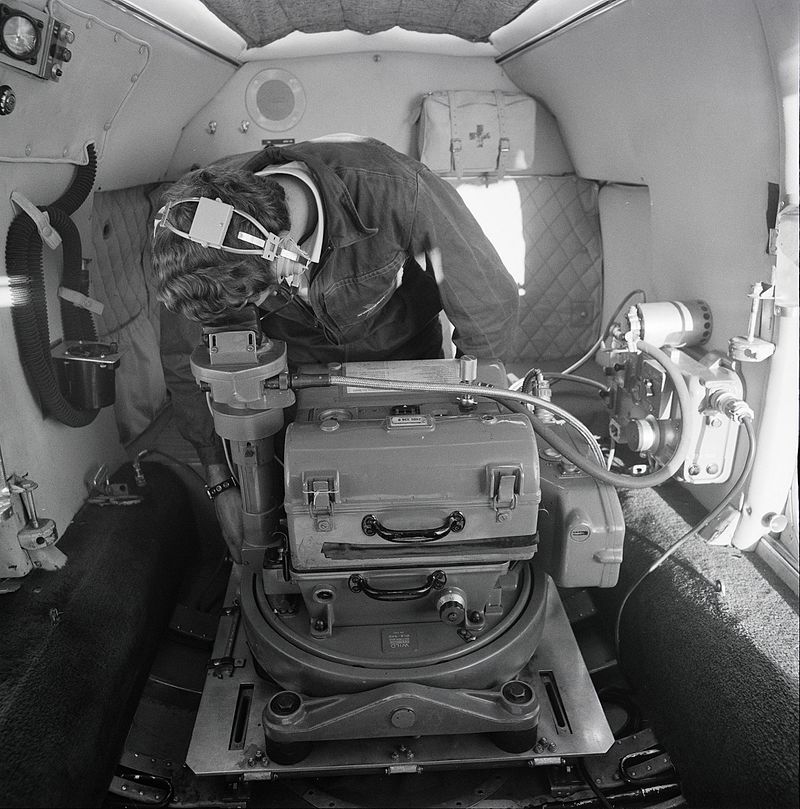
|
A Wild camera in operation. Image courtesy: Wikimedia Commons |
Michael Spender was a notable figure in the application of photogrammetry during this era. His work primarily focused on using such techniques to map specific regions within the Indian mountains. Photogrammetry combines photography with precise measurement techniques. During this period, terrestrial photogrammetry was primarily used due to the challenges of aerial photography in high-altitude regions. The rugged terrain and extreme altitudes made it difficult to conduct aerial surveys effectively, as flying at sufficient heights posed significant technical and financial challenges.
As Deborah Baker, in her book The Last Englishmen, writes, ‘…Just as painters had to rethink their art after the arrival of photography, so did mapmakers. The algorithms used to account for distortion and calculate scale from photographs made for laborious computations. A black box was needed to automate them. The first was invented in 1901; the Wild (pronounced Vilt) was the latest iteration…. The Swiss mastery of Felszeichnung, mountain portraiture, accounted for the popularity of prewar Swiss maps. Like the features of a human face, a skillful rendering of weathered rock, even the way its strata were arranged, gave each mountain face its individuality, its profile. After mastering Felszeichnung, Michael (Spender) left for the Alps to photograph the mountains themselves.’
The process involved capturing stereo images from multiple vantage points, which allowed cartographers to derive three-dimensional data and create detailed maps of mountainous regions. This method was particularly valuable for accurately representing the complex topography of the Himalayas, including peaks, glaciers, and valleys.
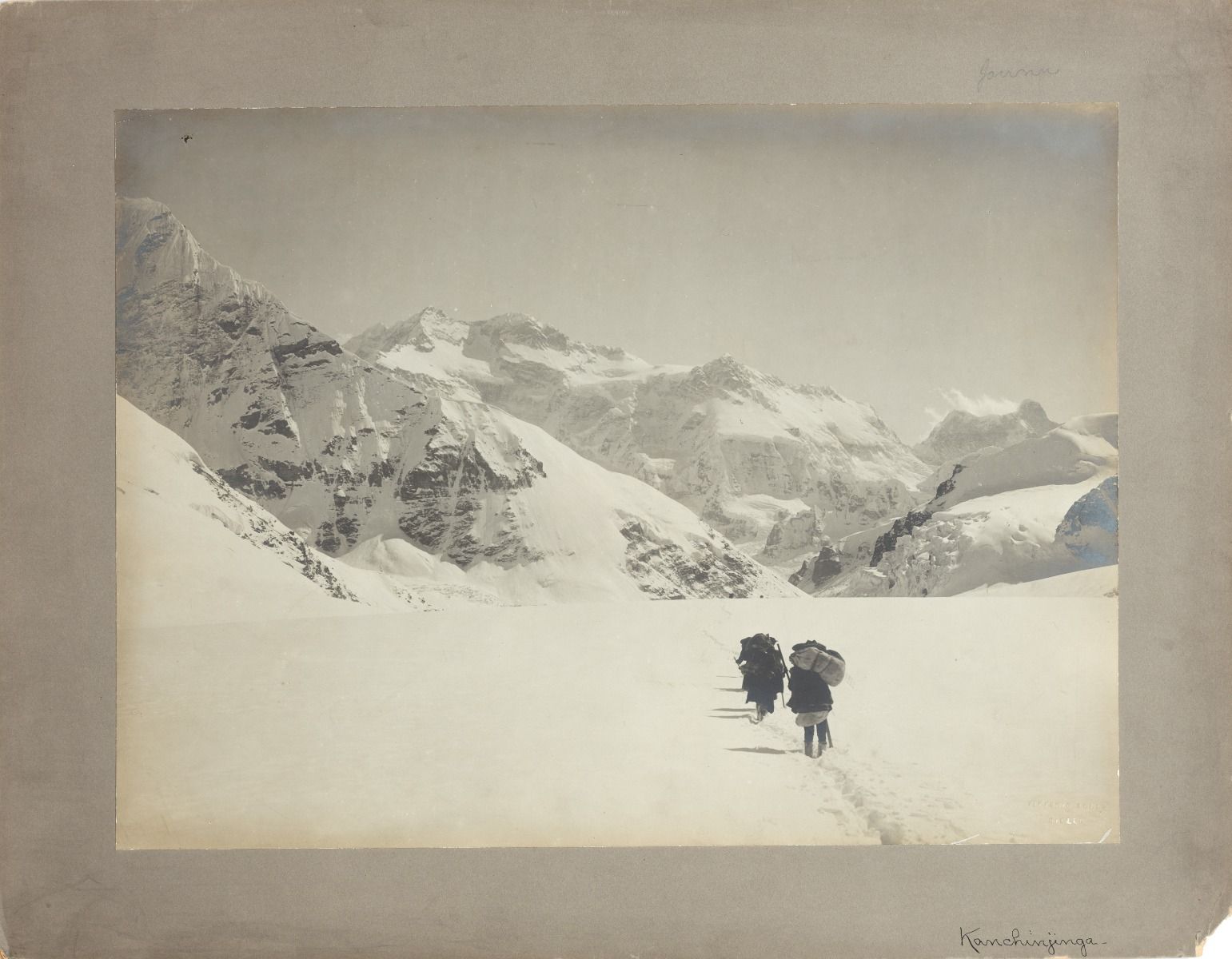
Vittorio Sella, Kanchinjinga [Kangchenjunga], 1899, Silver gelatin print mounted on card. Collection: DAG
Despite his remarkable achievements, Sella's legacy has faded over time. However, his photographs continue to inspire admiration for their artistic quality and documentary value. In recognition of his contributions, the Italian Alpine Club established the Vittorio Sella Hut at an altitude of 2,588 meters in the Grande Paradiso range—a testament to his enduring influence on both photography and mountaineering. Sella passed away on August 12, 1943, leaving behind a rich legacy that remains appreciated by climbers and photographers alike today.


